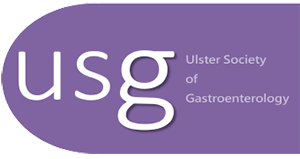Sedation Trends in Colonoscopy
Authors
Mackey R, Maybin R, Diong KL, Somerville JDepartments / Institutions
Antrim Area Hospital, Northern TrustPublication Date
Autumn 2015Introduction
Colonoscopy has both diagnostic and therapeutic applications. It is a fundamental examination in the assessment of colonic diseases and conditions but has the potential to be an uncomfortable experience for the patient.
Aims
The aim of this study is to analyse trends in the use and efficacy of sedation in patients undergoing colonoscopy.
Methods
Data gathered during 2012- 2014 from 3022 patients undergoing routine colonoscopy in Northern Trust Hospitals was analysed. Procedures were carried out by physicians, surgeons and a nurse endoscopist. Data included the procedure time, use of sedation and or Entonox and a comfort score.
Results
2012-2014: A significant reduction in the number of patients opting for sedation between 2012 and 2014 (P < 0.001).
A significant increase in the proportion of patients scoring a comfort score of 1 or 2 (P = 0.004). 2014: When comparing sedated and non-sedated patients, no significant difference in procedure times (P = 0.5453) or comfort scores (P = 0.2260) was found. 33.6% of non-sedated patients used Entonox. Only 7.7% of sedated patients used Entonox.
Conclusion
Sedation rates in the last 3 years have fallen. Patients opting for no sedation compared to those having sedation are at no disadvantage regarding the procedure time and comfort score. A minority of patients use Entonox. Further data is required to assess the efficacy of Entonox in colonoscopy. It is clear that other factors are contributing to the rising numbers of patients having a comfortable experience, most likely, improvement of technique by endoscopists.
Latest News
Gastroenterology FK Meeting Provision and Challenges
Posted on: 2nd April 2021Latest Event
There are no up-coming events.E-Publications
Download our latest Documents


